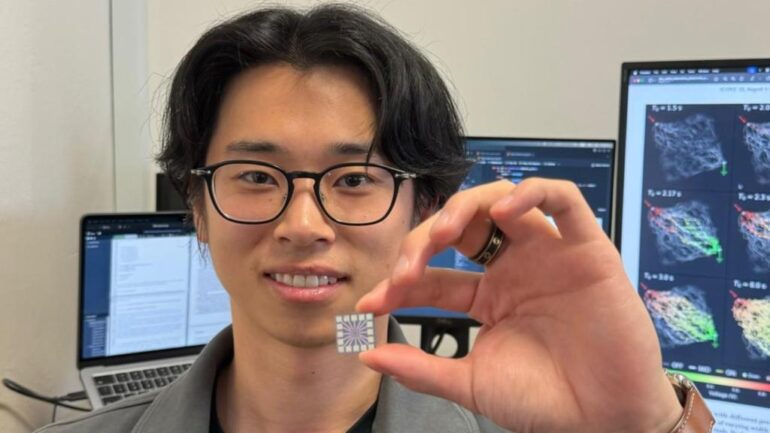TL;DR:
- Researchers at the University of Sydney Nano Institute have developed nanowire networks inspired by the human brain’s functioning.
- These networks can instantly recognize and remember sequences of electrical pulses related to images, enabling real-time learning and memory.
- Nanowire networks consist of tiny wires, similar to neural networks, and process data using algorithms that respond to changes in electronic resistance.
- The technology’s ability to adapt to continuous data streams makes it energy-efficient and suitable for complex real-world learning tasks.
- The research was published in Nature Communications, showcasing a significant advancement in machine learning.
Main AI News:
In a groundbreaking development for machine intelligence, scientists have harnessed tiny networks that self-organize like the classic game Pick-up Sticks. Inspired by the intricate workings of the human brain, researchers from the University of Sydney Nano Institute have utilized a network of minuscule wires to recognize and store sequences of electrical pulses corresponding to images, enabling real-time learning and memory capabilities.
Traditionally, the technology has not been equipped to handle instantaneous data processing and adaptation. Physicist Ruomin Zhu highlights the importance of adapting to continuous data streams, such as those from sensors, asserting that machine learning reliant on artificial neural networks must possess this dynamic capability. “The findings demonstrate how brain-inspired learning and memory functions using nanowire networks can be harnessed to process dynamic, streaming data,” Mr. Zhu explains.
These networks consist of tiny wires with diameters on the scale of billionths of a meter, closely mimicking the neural networks of the human brain. They process information by executing memory and learning tasks through a series of commands or algorithms that respond to changes in electronic resistance at the intersections of the nanowires, much like the junctions in the game of Pick-up Sticks.
Leading researcher Professor Zdenka Kuncic compares their recent memory task to remembering a phone number, which involves recalling sequences of up to eight digits. Prior research established the nanowire networks’ ability to remember simpler tasks, but the collaboration with the University of California at Los Angeles (UCLA) has now demonstrated that these machines can effectively manage vast amounts of continuously changing data.
Traditionally, the conventional approach involves storing data in memory and then training a machine learning model with that stored information. However, this method consumes excessive energy, rendering it unsuitable for widespread applications. Professor Kuncic emphasizes the novelty of their approach, which allows the nanowire neural network to learn and remember “on the fly,” processing data sample by sample in real-time.
This innovative technique not only conserves energy but also reduces memory usage significantly, paving the way for efficient and low-energy machine intelligence capable of handling complex real-world learning and memory tasks. Their groundbreaking research paper has been published in Nature Communications, marking a significant stride in the field of machine learning and artificial intelligence.
Conclusion:
The development of nanowire networks for real-time machine learning represents a substantial leap forward in the field. This innovation offers energy-efficient solutions for processing continuous data streams and opens doors to more complex real-world applications. It has the potential to disrupt the market by providing efficient and low-energy machine intelligence for various industries, ranging from healthcare to autonomous systems and beyond.

